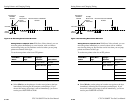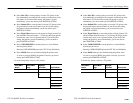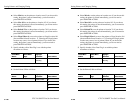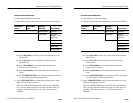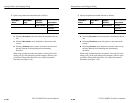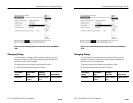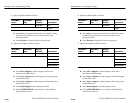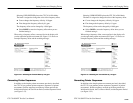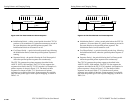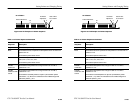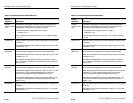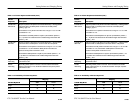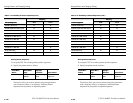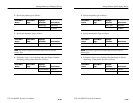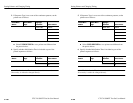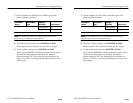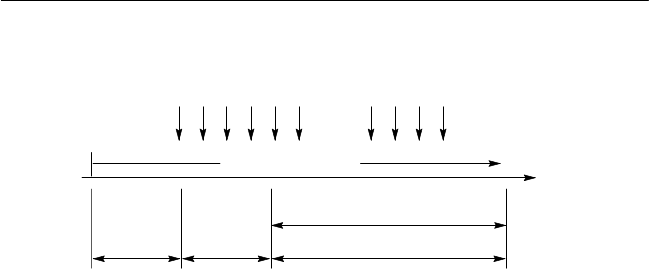
Setting Pointers and Changing Timing
3–152
CTS 710 SONET Test Set User Manual
Added or Cancelled Pointer Positions
Repeating Pattern Time
30 s
Initialization
Cool Down Sequence Period
. . .
Figure 3–52: The Three Periods of a Pointer Sequence
H Initialization Period – a thirty second period where the CTS 710
produces a 30 second burst of 1 pointer movement per second in
the same direction as the specified pointer sequence. The
Initialization Period can be turned on or off.
H Cool Down Period – a period at least 60 seconds long, following
the Initialization Period, where the specified pointer sequence is
running.
H Sequence Period – the period following the Cool Down period
where the specified pointer sequence runs continuously.
The CTS 710 generates the pointer sequences described in the
ANSI T1.105.03–1994 standard. The CTS 710 also supports the
sequences described in the ITU-T G.783 standard. An example of a
pointer sequence is shown in Figure 3–53. The details of these
sequences are shown in Table 3–13. Note that not all pointer
sequences are available all the time. Some sequences are available
only with one pointer type or with a specific mapping, as shown in
Table 3–14.
Setting Pointers and Changing Timing
3–152
CTS 710 SONET Test Set User Manual
Added or Cancelled Pointer Positions
Repeating Pattern Time
30 s
Initialization
Cool Down Sequence Period
. . .
Figure 3–52: The Three Periods of a Pointer Sequence
H Initialization Period – a thirty second period where the CTS 710
produces a 30 second burst of 1 pointer movement per second in
the same direction as the specified pointer sequence. The
Initialization Period can be turned on or off.
H Cool Down Period – a period at least 60 seconds long, following
the Initialization Period, where the specified pointer sequence is
running.
H Sequence Period – the period following the Cool Down period
where the specified pointer sequence runs continuously.
The CTS 710 generates the pointer sequences described in the
ANSI T1.105.03–1994 standard. The CTS 710 also supports the
sequences described in the ITU-T G.783 standard. An example of a
pointer sequence is shown in Figure 3–53. The details of these
sequences are shown in Table 3–13. Note that not all pointer
sequences are available all the time. Some sequences are available
only with one pointer type or with a specific mapping, as shown in
Table 3–14.



